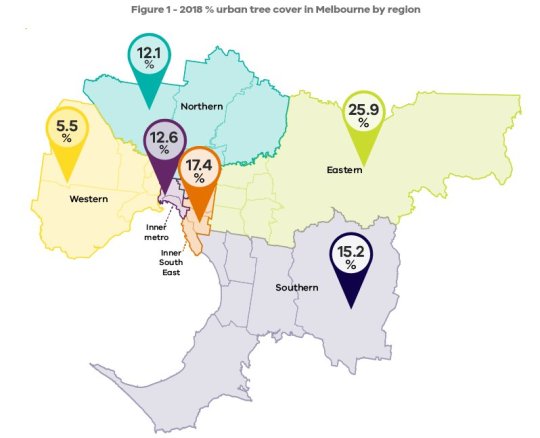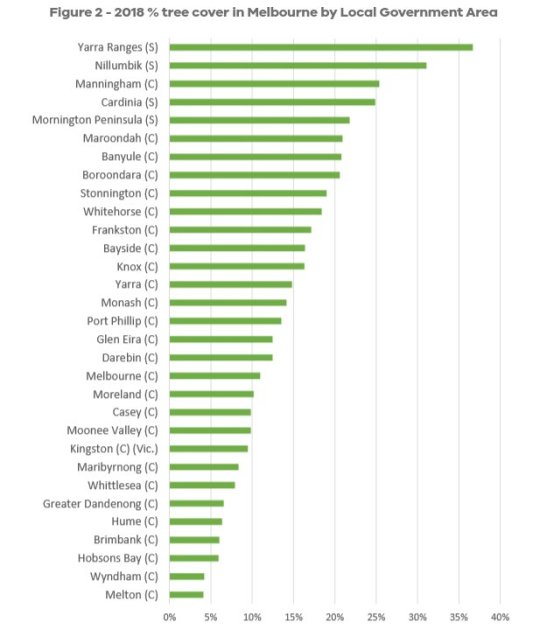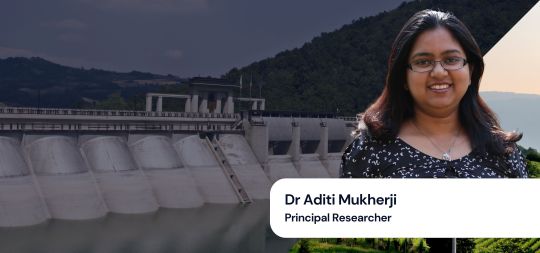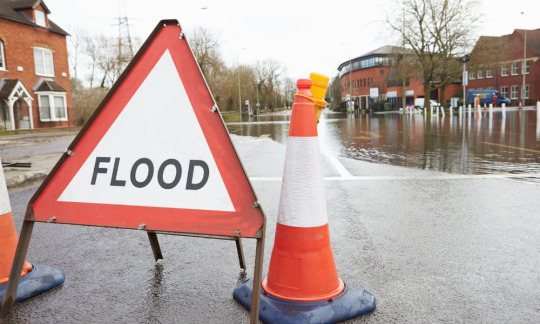#ClimateAdaptation
Text
Priority needed to address tree canopy over Melbourne footpaths and bikepaths

In Melbourne's hot summer with urban heat island boosting temperatures that are also increasing due to climate change, local and State Governments need to improve tree canopy shade over footpaths and bikepaths. It is a matter of heat health and social equity.
Ben Rossiter from Victoria Walks said all levels of government should invest in planting trees around footpaths to encourage walking.
"We need to prioritise tree planting particularly routes to school, routes to public transport and to local shops," he said. "Older walkers, people with disabilities, families with young children all tend to walk slower, they need shade because they'll be out in the sun longer," he said.
"In disadvantaged areas, people have fewer transport options so walking is really central and if walking is unappealing they lose options for social connections but also they can't get to schools, work and shops."
#Urbanheat #heatwave #TreeCanopy #heathealth #ClimateChange #UHIE #urbanForest #VictoriaWalks #ClimateAdaptation
ABC, Even in Melbourne's leafy councils, some suburbs are battling to find the shade https://www.abc.net.au/news/2023-01-15/melbourne-heat-island-tree-canopy-cover-banyule/101808170

#urbanHeat#heatwave#TreeCanopy#HeatHealth#ClimateChange#UHIE#UrbanForest#VictoriaWalks#ClimateAdaptation
2 notes
·
View notes
Photo

Rising sea levels force architects and planners to reconsider the future of coastal cities, demanding solutions like floating cities, modular infrastructure, and vertical farming to ensure adaptability. By blending water management and resilient design, we can transform cities into environments that embrace water, integrating it into their ecosystems. Future cities will thrive using nature-based solutions, creating dynamic, self-sufficient urban spaces capable of withstanding environmental changes. This shift represents a response to the crisis and an opportunity to build sustainable, innovative, and resilient urban landscapes.
#resilientcities#floatingarchitecture#urbanfutures#climateadaptation#sustainablecities#modulararchitecture#greeninfrastructure#floodresilience#verticalfarming#adaptivecities#watermanagement#coastalresilience#urbanplanning#environmentaldesign#futureproof#floods#water
0 notes
Photo

Rising sea levels force architects and planners to reconsider the future of coastal cities, demanding solutions like floating cities, modular infrastructure, and vertical farming to ensure adaptability. By blending water management and resilient design, we can transform cities into environments that embrace water, integrating it into their ecosystems. Future cities will thrive using nature-based solutions, creating dynamic, self-sufficient urban spaces capable of withstanding environmental changes. This shift represents a response to the crisis and an opportunity to build sustainable, innovative, and resilient urban landscapes.
#resilientcities#floatingarchitecture#urbanfutures#climateadaptation#sustainablecities#modulararchitecture#greeninfrastructure#floodresilience#verticalfarming#adaptivecities#watermanagement#coastalresilience#urbanplanning#environmentaldesign#futureproof#floods#water
0 notes
Text
Ioan Albu Prefect Discusses the Impact of Agronomist Engineers on Sustainable Agriculture This Year
Discover how agronomist engineers are revolutionizing sustainable agriculture in 2024! 🌱🚜 Ioan Albu Prefect reveals the groundbreaking innovations and strategies driving the future of farming. From precision agriculture to climate adaptation, learn how these experts are making a real impact on soil health, crop resilience, and environmental stewardship. Dive into this year’s most exciting advancements in agriculture and see how these changes are shaping a more sustainable future.
#SustainableAgriculture#AgronomistEngineers#IoanAlbuPrefect#PrecisionFarming#ClimateAdaptation#SoilHealth#CropResilience#InnovativeAgriculture#GreenFarming#FutureOfFarming#AgTech#EnvironmentalImpact#FarmInnovation
1 note
·
View note
Text
Water Engineering
Design resilient water infrastructure with N Engineering. Our solutions focus on creating systems that withstand extreme weather events and adapt to changing conditions, ensuring long-term reliability.

0 notes
Text
Submerged Streets, Soaring Spirits: America's Flood Fighters Rise to the Challenge

In the heart of America's Midwest, a silent invader creeps through neighborhoods, swallowing streets and transforming backyards into impromptu lakes. The Mississippi River, once a lifeline for commerce, has become a menacing giant, its swollen banks threatening communities that have stood strong for generations.
As dawn breaks over Cedar Rapids, Iowa, the city awakens to a landscape transformed. Streets have become canals, and homes stand like islands in a sea of muddy water. But amidst the chaos, a remarkable story of human resilience unfolds.

Meet Sarah Thompson, a local schoolteacher turned flood fighter. "I've lived here all my life," she says, her eyes reflecting determination as she stacks sandbags. "This river's taken a lot, but it can't take our spirit." Sarah's story is just one among thousands, each a testament to the indomitable will of those facing nature's fury.
In nearby Davenport, innovative solutions emerge from necessity. Local engineer Mike Rodriguez has designed a mobile flood barrier system that can be deployed in hours. "We can't stop the water," he explains, "but we can outsmart it." His invention has already saved dozens of businesses from ruin, proving that human ingenuity can indeed turn the tide.
The flood's impact ripples far beyond the water's edge. In Des Moines, hundreds of miles from the Mississippi, supply chains strain as vital transport routes are cut off. Yet, in true American fashion, businesses adapt. Local grocer Tom Wilson has partnered with drone delivery services to ensure essential supplies reach isolated communities. "We're all in this together," he says, embodying the spirit of community that defines the American heartland.
As the waters begin their slow retreat, attention turns to the future. Environmental scientist Dr. Emily Chen sees an opportunity in the crisis. "These floods are a wake-up call," she argues. "We need to rethink our relationship with our rivers." Her team is pioneering natural flood management techniques, working with nature rather than against it.
The road to recovery will be long, but hope flows as strongly as the floodwaters. In town halls and community centers across the affected regions, plans for a more resilient future are taking shape. There's talk of "sponge cities" designed to absorb excess water, and advanced early warning systems to give communities crucial extra hours to prepare.
This flood is more than a natural disaster; it's a crucible forging stronger, more united communities. As one local resident put it, "The water may have divided our streets, but it's united our hearts."
For those looking to support flood victims or learn more about flood preparedness, visit [insert link to flood relief organization]. Remember, in the face of nature's might, our greatest strength lies in our unity.
Are you ready to maximize your chances for recovery? Contact us now for a FREE CONSULTATION with both a public adjuster and an attorney! Get immediate advice from both a public adjuster and an attorney when you reach out to us. Receive a preliminary assessment of your property damage and an estimate of potential insurance compensation. Benefit from the expertise of construction professionals for accurate property damage evaluation.
#MidwestFloods#FloodResilience#USAFlooding#MississippiRiverFlood#CommunityStrength#FloodRecovery#AmericanSpirit#DisasterResponse#FloodInnovation#ClimateAdaptation#FloodPreparedness#RisingWaters#FloodRelief#NaturalDisaster#FloodFighters#WaterManagement#EmergencyResponse#FloodSurvivors#RebuildingAmerica#FloodAwareness#before the flood#carolina hurricanes#hurricane#seattle storm#storm#California#Colorado#Florida#Georgia#Illinois
1 note
·
View note
Text
Building Resilient Cities: The Vital Role of Investment Banks in Combating Climate Change
Climate change poses one of the most urgent and complex challenges of our time, with increasingly evident and devastating impacts worldwide. Amidst this challenging scenario, cities emerge as critical points of vulnerability, facing the growing threat of extreme weather events that jeopardize infrastructure, economies, and the well-being of millions of urban dwellers.
In this context, investment banks play a crucial role in constructing more resilient cities prepared to face the challenges of climate change. Through their unique ability to mobilize financial resources, investment expertise, and market influence, these financial institutions play a vital role in promoting innovative and sustainable solutions to ensure a safer and more sustainable urban future.
The Challenge of Urban Climate Resilience
Cities are hubs of economic activity, innovation, and cultural diversity, but they are also vulnerable to the impacts of climate change. Extreme weather events such as floods, droughts, and heatwaves pose significant threats to urban infrastructure, citizen safety, and economic stability. Urban climate resilience, therefore, becomes an essential priority to ensure the sustainability and prosperity of urban areas in an ever-changing world.
The Transformative Role of Investment Banks
Investment banks play a transformative role in building resilient cities, acting as catalysts for strategic and innovative investments. Through financing resilient infrastructure, investment in renewable energy and energy efficiency, development of risk finance instruments, support for adaptive technology development, and promotion of awareness programs, these financial institutions are at the forefront of the fight against climate change.
Tangible Benefits and Positive Impacts
The benefits of investing in urban climate resilience are vast and tangible. Modernizing urban infrastructure, transitioning to clean energy sources, protecting against extreme weather events, and raising awareness among the population about climate challenges are just some of the ways investment banks can contribute to building more resilient and sustainable cities.
Collaboration and Collective Commitment
To achieve the goal of building resilient cities, close collaboration between investment banks, governments, businesses, and local communities is essential. Integrating environmental, social, and governance (ESG) criteria into investment decisions, promoting sustainable practices, and implementing innovative solutions are critical to ensuring the success of urban climate resilience initiatives.
Conclusion: Towards a Sustainable and Resilient Urban Future
In a world marked by increasingly urgent climate challenges, investment banks play a vital role in building resilient cities prepared to face the challenges of the 21st century. By investing in innovative solutions, promoting sustainability, and collaborating with various societal actors, these financial institutions are at the forefront of the fight against climate change, ensuring a safer, more sustainable, and resilient urban future for all.
This article highlights the importance of the role of investment banks in building climate-resilient cities and aims to inspire concrete actions in this direction.
#ResilientCities#ClimateChange#InvestmentBanks#UrbanResilience#SustainableFuture#ClimateAction#InfrastructureInvestment#RenewableEnergy#ClimateResilience#ESGCriteria#Collaboration#ClimateAdaptation#BuildingBetterCities#SustainabilityLeadership
0 notes
Text

🌍 Ready to make a difference? 🌱 Dive into the M.Sc in Climate Change and Sustainability Studies from TERI School of Advanced Studies. 🎓 Equip yourself with strategies for sustainable development, policy analysis, and climate adaptation. Join the movement shaping a greener future! 🌿👉 www.themasterclass.co.in/register
#TheMasterClass#Letsconnect#ClimateChange#SustainabilityStudies#TERISchool#GreenFuture#ClimateAction#SustainableDevelopment#EnvironmentalScience#ClimateAdaptation#HigherEducation#ClimateSolutions#EcoEducation#ClimateLeadership#SustainableLiving#GreenEducation#GlobalChange
0 notes
Text
What would you do if you're in dry place with little to now water
Envision being in a location where water is scarce or virtually non-existent. How would you adapt to this drastic change in living conditions? Here's a comprehensive manual to initiate your journey.
#WaterConservation#DryZoneSurvival#SustainableLiving#DroughtResilience#EcoFriendly#WaterSavingTips#DesertLife#AridClimate#ConservationTechniques#WaterWise#EnvironmentProtection#DroughtPreparedness#RainwaterHarvesting#ClimateAdaptation#EcoSurvival#WaterScarcity#GreenLiving
1 note
·
View note
Text
Pakistan's Battle with Climate Change Effects on Society and Human Welfare
Pakistan, where climates converge in a single dance from the K2 icy peaks to Karachi's coastal trance. In this varied weathered romance where the dance of economics is found in parallel. Surrounded by titans, east to west, economic climaxes, a symphony of relish.
A canvas painted with carbon's tale, where 250 million souls set their sail. Amidst billions to demand so high in the sky it soars, reaching the heavens nigh. A battle expands against climate's range of Pakistan, a warrior in the winds of change.
#PakistanClimateAction#ClimateChangeImpacts#SustainablePakistan#ClimateResilience#HumanWelfare#ClimateActionPK#EnvironmentalJustice#ClimateAdaptation#CommunityResilience#GreenPakistan#ClimateActionNow#SocialImpactPK#AdaptationStrategies#ClimateAwareness#ResilientCommunities#SocietyandClimate#ClimateChangeMitigation#WelfareInFocus#EcoFriendlyPakistan#ClimateActionForAll
0 notes
Text
Climate resilience: Role of water-energy-food nexus
In conversation with India Energy Hour, Dr. Aditi Mukherji, Principal Researcher, takes a deep dive into the importance of water security in India's climate adaptation efforts, emphasizing the significance of solar irrigation, the Kusum project, and the need for policy coherence and cooperation in addressing climate resilience challenges.
The India Energy Hour
A recent conversation between Shreya Jai and Dr. Aditi Mukherji highlights critical issues surrounding water security and climate adaptation in India. Dr. Mukherji, an expert in water resource management, underscores the importance of water in climate adaptation and discusses India's challenges in addressing these issues. She also delves into the outcomes of COP26 and emphasizes the need for greater cooperation, both domestically and internationally, to ensure water security in vulnerable regions. Furthermore, she provides insights into India's "Har Ghar Jal" mission and its potential impact on providing tap water to all households.
Tune in to the full episode to find out more!
Available on major podcast platforms and our website

#WaterSecurity#ClimateAdaptation#IndiaClimate#ClimateChange#COP26#SolarIrrigation#KusumProject#TransboundaryCooperation#HarGharJal#Sustainability
0 notes
Text
Keeping the UK dry and safe! 🌧️💪 Exploring the vital world of flood protection and alleviation. From innovative solutions to resilient infrastructure, we're ready to tackle Mother Nature's challenges. 🇬🇧🏞️
#UKFloodProtection#FloodResilience#AlleviateFloods#ClimateAdaptation#ResilientUK#ProtectOurCommunities#WaterManagement#NaturalDisasterResponse#ClimateChangeReady#SafetyFirst
0 notes
Text
What Are The Economic Benefits Of Investing In Flood Prevention And Mitigation Strategies?

Floods are among the most destructive natural disasters, causing significant damage to both urban and rural areas around the world. In recent years, the frequency and severity of floods have increased due to climate change and urbanization. As a result, there is a growing need for effective flood prevention and mitigation strategies.
While the upfront costs of these strategies can be substantial, the long-term economic benefits far outweigh the initial investments. In this blog post, we will explore the various economic benefits of investing in flood prevention and mitigation strategies.
Reduced Property Damage
One of the most immediate economic benefits of flood prevention and mitigation strategies is the reduction in property damage. When floods occur, homes, businesses, and infrastructure can be severely affected, leading to significant financial losses. By implementing flood prevention measures such as levees, flood walls, and improved drainage systems, the extent of property damage can be minimized. This not only saves property owners and businesses from costly repairs but also reduces the financial burden on governments and insurance companies.
Lower Insurance Costs
Frequent flooding in certain areas can result in higher insurance premiums, or in some cases, make it difficult for property owners to obtain coverage altogether. When communities invest in flood prevention and mitigation strategies, insurance companies are more likely to offer affordable policies, as the risk of flood-related claims is reduced. This, in turn, leads to cost savings for property owners and businesses.
Preservation Of Infrastructure
Floods can wreak havoc on critical infrastructure, including roads, bridges, utilities, and public transportation systems. Repairing or replacing damaged infrastructure is a costly endeavor that can strain municipal budgets. By investing in flood prevention measures that protect infrastructure, governments can save money in the long run and ensure the continued functionality of vital services.
Enhanced Agricultural Productivity
Agriculture is a sector particularly vulnerable to the impacts of flooding. Crops can be destroyed, and farmland can become unusable after a flood event. Flood prevention strategies such as the construction of retention ponds and the implementation of proper drainage systems can help protect agricultural land. By safeguarding farms and crops, communities can ensure a stable food supply and reduce the economic burden on farmers and consumers alike.
Increased Property Values
Areas prone to flooding often suffer from lower property values due to the perceived risk. When flood prevention and mitigation measures are put in place, the perceived risk decreases, leading to higher property values. This benefits homeowners and communities by increasing property tax revenue, which can be reinvested in local infrastructure and services.
Job Creation
Investing in flood prevention and mitigation strategies generates employment opportunities. Construction, engineering, and maintenance of flood control infrastructure require a skilled workforce. Additionally, the restoration efforts following a flood event can create temporary jobs. These employment opportunities contribute to economic growth and stability within a region.
Business Continuity
Businesses that are located in flood-prone areas face disruptions and financial losses when floods occur. By implementing flood prevention measures, businesses can ensure continuity of operations and protect their assets. This contributes to the overall economic resilience of a community.
Reduced Disaster Relief Costs
When floods strike, governments often allocate significant resources for disaster relief and recovery efforts. By proactively investing in flood prevention and mitigation, the frequency and severity of flood events can be reduced, leading to lower disaster relief costs over time. These funds can then be allocated to other essential services and infrastructure projects.
Conclusion
In conclusion, investing in flood prevention and mitigation strategies is not only a prudent choice for safeguarding communities against the increasing threat of floods but also a wise economic decision. The long-term benefits, including reduced property damage, lower insurance costs, preserved infrastructure, increased property values, job creation, business continuity, and reduced disaster relief costs, far outweigh the initial investments. As climate change continues to pose challenges, proactive flood prevention measures are essential for building resilient and economically vibrant communities. It is clear that the economic benefits of such investments are substantial, making flood prevention and mitigation strategies a smart choice for governments, businesses, and homeowners alike.
Source: What Are The Economic Benefits Of Investing In Flood Prevention And Mitigation Strategies?
#FloodPrevention#MitigationStrategies#EconomicBenefits#InfrastructureInvestment#ResiliencePlanning#DisasterManagement#CommunityProtection#RiskReduction#ClimateAdaptation#SustainableDevelopment
0 notes
Link
#Adaptation#Carpentry#Climateadaptation#Craftsmanship#Craftsmen.#Creativity#Culturalbridge#Dedication#Europeanstandards#High-qualitysaunas#Ingenuity#Legacy#Malaysia#Mentorship#Overseasprojects#Persistent#saunadesign#Skilledlabor#Tradition#Trailblazer
0 notes
Text
"The Cost of Inaction: Why We Can't Afford to Ignore Climate Change Anymore"
1. Introduction :
Climate change is one of the most pressing issues of our time, and its impacts are already being felt around the world. Simply put, climate change refers to the long-term changes in global temperatures, weather patterns, and other environmental factors that are caused by human activity. The primary driver of climate change is the burning of fossil fuels, which releases…
View On WordPress
#carbonfootprint#cleanair#cleanenergy#climateaction#climateadaptation#climateawareness#climatechange#climatecrisis#climateeducation#climateemergency#climatejustice#climateleadership#climatepolicy#climateprotection#environment#globalwarming#greenenergy#nature#renewableenergy#sustainability#sustainabledevelopment#sustainableliving#dailyprompt
1 note
·
View note
Photo

Topic: Climate change, thermal comfort, and energy efficiency: Meeting the challenges of cities in the 21st century Conference Title: Saving our Cities: Looming Challenges and Data-Driven Policy-Making Dates: June 17-18, 2022 Venue: Lahore University of Management Sciences (LUMS), Lahore, Pakistan Scientific evidence for the warming of the climate system is unequivocal. We witness climate change through Global temperature rise, ocean warming, decreased snow cover, extreme weather events, ocean acidification, rising sea levels etc. Climate is turning cities into ovens. Cities are heating up; we should prepare ourselves and learn how to keep them cool? Last month, I presented my work on "Climate change, thermal comfort, and energy efficiency: Meeting the challenges of cities in the 21st century" during a conference at LUMS, Lahore, Pakistan. Proving adequate thermal conditions in buildings and built environments is essential for human health and well-being. By using scientific knowledge and methods, we can improve the thermal performance of buildings while using less energy for heating and cooling. #ClimateChange #ClimateMitigation #ClimateAdaptation #ThermalComfort #EnergyEfficiency #Energy #GlobalWarming #Cities #UrbanPlanning #Buildings #Architecture #LUMS #LUMSLahore #Lahore #Punjab #Pakistan #BUITEMS #architectwaqas (at LUMS) https://www.instagram.com/p/CjNBiRatq6m/?igshid=NGJjMDIxMWI=
#climatechange#climatemitigation#climateadaptation#thermalcomfort#energyefficiency#energy#globalwarming#cities#urbanplanning#buildings#architecture#lums#lumslahore#lahore#punjab#pakistan#buitems#architectwaqas
1 note
·
View note